Emanuel Lasker - The Complicated Master
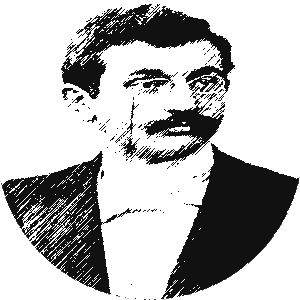
Emanuel Lasker
He went to live in Berlin at the age of 11 to study mathematics. He was gifted in this field and later in life he would make some noteworthy contributions. He learned to play chess around this time and soon proved to be extremely talented.
Lasker became one of the top players in Germany while still in his teens. He became a Master at the age of 21.
Lasker accepted Steinitz's theories on the significance of positional strategy. He understood the interchangeable relationship between tactics and strategy. He became renowned for leading opponents into complications by not playing book moves. He was very strong in the ensuing tactical battles.
Young Emanuel
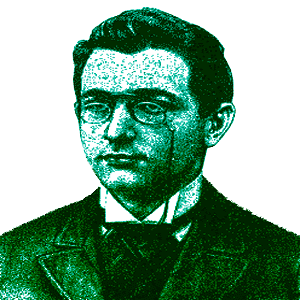
A younger Emanuel Lasker
Emanuel took to chess with the same consummate ease with which he had taken to mathematics. He was born to play the game and by the age of 20 was challenging the best players in Germany. He beat the master Jacques Mieses in a match in Leipzig that year.
He was granted the title of German Master in 1889 after winning the Cafe Kaiserhof's Winter tournament and a minor tournament in Breslau. He then finished 2nd in his international debut at Amsterdam 1889 behind Amos Burn. James Mason was 3rd, Louis van Vliet was 4th. Isidor Gunsberg, who would push Steinitz close (6-4) the following year in a World Championship match, was 5th. Lasker who beat Gunsberg with the Black pieces was certainly starting to make waves.
Shooting for the Stars
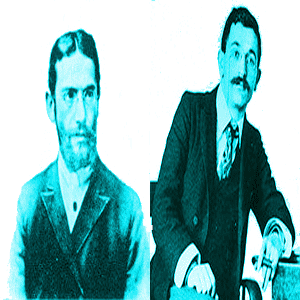
Emanuel Lasker was challenging players like Siegbert Tarrasch
Siegbert Tarrasch was probably the strongest player in the world around 1890. His performances in tournaments where he tended to get the better of Steinitz and everyone else certainly suggested this. He did not challenge Steinitz to a match for the title due to work commitments.
Tarrasch had a serious ego and when the upstart Lasker had the audacity to challenge him to a match he was almost offended. The reply was something along the lines of you had better win a couple of tournaments before presuming the cheek to challenge me.
Lasker vs Steinitz
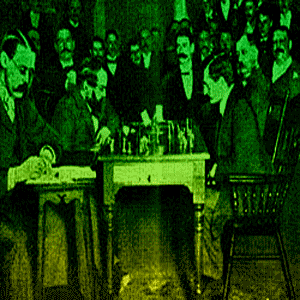
Emanuel Lasker dethrones Wilhelm Steinitz
The fee was in fact cut to $2,000 in the end, significantly less than Steinitz had received in earlier encounters. Ordinarily this would have led to Lasker's challenge crumbling but Steinitz was a disaster with money and no doubt needed an injection of capital pretty badly.
Steinitz did not recognize the threat that Lasker carried and never considered the possibility that he wouldn't win. Lasker wasn't expected to prevail by the chess fraternity in general. Shockwaves reverberated throughout the chess world when Lasker triumphed 10-5 with 4 draws.
More good results would follow. He finished 3rd at Hastings 1895 behind Pillsbury and Chigorin. He then won the elite 4 player tournament, St Petersburg 1896, putting his 3 main rivals, Steinitz, Pillsbury and Chigorin in the shade. He effectively ended Steinitz's career in a World Championship rematch 3 years later by crushing him 10-2 with 5 draws. He had now established himself as top dog beyond any doubt.
The Longest Reign in History
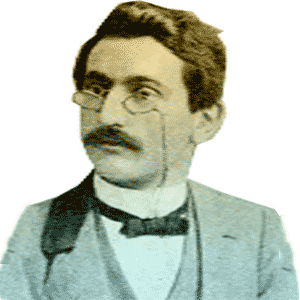
Emanuel Lasker was World Champion for 27 years
Some thought him unreasonable but he had watched Steinitz die in poverty. He was determined that he was going to see some return for his talent and his status as World Champion. He enjoyed marvellous results in big tournaments during his tenure as champion: 1st at Nuremburg 1896, 1st at London 1899, 1st at Paris 1900, joint 2nd at Cambridge Springs 1904, and famously winning St Petersburg 1914.
Lasker successfully defended the title 6 times, the 1st against Steinitz in 1897 of course, then against Marshall (1907), against Tarrasch (1908), against Janowski (1909) and against Schlechter (1910) where he was lucky to escape with a draw. He scored a 2nd World Championship win over Janowski in 1910. This was enough to keep him as champion through to what they used to call the Great War (World War I to us). Finally in Havana in 1921 Capablanca took the title from him.
Lasker vs Tarrasch

Siegbert Tarrasch (right) challenged Emanuel Lasker for the World Championship in Cologne in 1908
This was a bit much considering Tarrasch had earlier declined a match against Lasker. He had put work commitments ahead of his own title ambitions and now he had a problem with someone else challenging. Chigorin had challenged unsuccessfully, Tarrasch had turned down the chance and now Lasker had seized the title.
Tarrasch did not think much of Lasker's playing style or indeed Lasker himself. He had designs on putting him in his place. Lasker had been champion for more than a decade and had successfully defended twice before Tarrasch finally challenged him in 1908. The match did not turn out as Tarrasch had hoped. He blamed the wet weather when Lasker comfortably beat him 8-3 with 5 draws. They would play a short match some 8 years later which Lasker won 5.5 - 0.5.
Lasker vs Capablanca

Jose Raul Capablanca beat Emanuel Lasker in 1921 to become World Champion
By 1912 he was in his mid-20s and approaching the height of his powers. He was winning high profile tournaments with strong fields and beating big names in matches, playing remarkable chess along the way.
Capablanca would in the future publish a set of rules and regulations to govern the way World Championship matches would be conducted. All of the top players including Lasker would accept the proposals. But for now the challenger would have to negotiate from a position of weakness for a chance to win the title. The match eventually took place in 1921 in Havana, Cuba. Capablanca won the title (which Lasker had earlier resigned) on a score of 4-0 with 10 draws.
After Havana
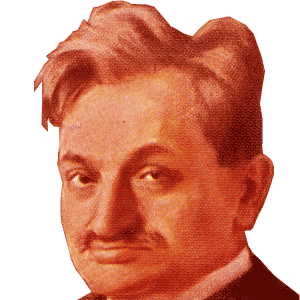
Emanuel Lasker moved to Russia and then the United States
He drifted into other activities playing Bridge and Go for a while. He also invented a draughts variant called Lasca. Due to his Jewish heritage, he was forced out of Germany in 1933 when Adolf Hitler came to power.
He and his wife moved to the USSR for a time before ending up in New York. He made a living there giving lectures on chess and bridge. Financial pressures forced him to return to serious competition in the mid-30s. He was 5th at Zurich 1934 and an incredible 3rd at Moscow 1935 more than 40 years after originally becoming World Champion. His last involvement in chess was a loss to one of his old sparring partners, Frank Marshall in a short match in 1940. He succumbed to a kidney infection in 1941 as a charity patient in Mount Sinai Hospital, New York. Despite his best efforts he died penniless just like Steinitz.
Legacy of Lasker

Emanuel Lasker believed that the rigour of human emotion played a part in chess along with the powers of human calculations
However he disagreed fundamentally with Tarrasch's contention that chess strategy is governed by precise logic. Lasker believed that every position was a creature in it's own right and sometimes called for a move that was in contradiction of accepted chess principles.
In other words there are times when a Knight on the rim is not grim. There are occasions when a Rook does not go behind a passed pawn. It's okay to improvise and complicate matters.
Moving On

Jose Raul Capablanca
He also demanded large fees for the matches and exhibitions that he played. At first other players thought he was selfish for demanding high stakes for matches. In time however they came to see that he simply believed that masters should be remunerated for their work like any other professional.
When Morphy and Anderssen played the game it was not seen as a career. A man was expected to have a profession of some sort lest he be considered a layabout. Tarrasch even demurred the opportunity to play Steinitz for the title because the day job was a higher priority. Lasker's influence meant that top chess players like Jose Raul Capablanca would be able to make a good living from the game.






